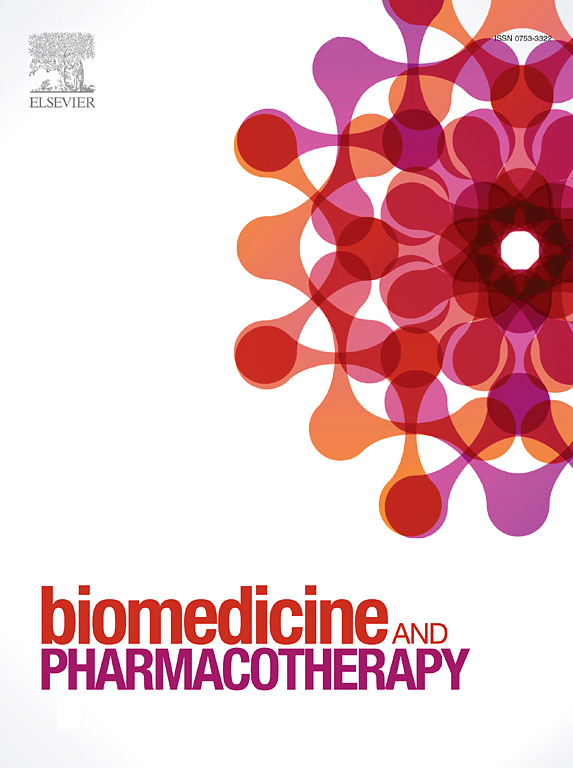在干眼症的背景下对百日草花提取物进行药理学体外分析。
IF 6.9
2区 医学
Q1 MEDICINE, RESEARCH & EXPERIMENTAL
引用次数: 0
摘要
背景:干眼症(DED)是由眼表炎症和泪膜质量或分泌不足引起的。假设/目的:本研究旨在对两种不同的巴戟天(Buddleja officinalis Maxim.)提取物进行全面的体外药理学和植物化学分析,以评估其治疗 DED 的潜力:方法:通过UHPLC-UV-MS和UHPLC-ELSD分析,对水乙醇(BO-HE)和类铅增强(BO-LLE)巴戟天提取物进行植物化学鉴定。随后,研究了 BO-HE 或 BO-LLE 对体外干眼模型的影响,包括人角膜上皮细胞转化(HCE-T)细胞、永生化人睑板腺上皮细胞(IHMGECs)和人白血病单核细胞(THP-1)细胞以及 Jurkat 细胞:结果:两种提取物都具有很强的抗炎特性,它们都能清除自由基,并能减少暴露于 UVB 的 HCE-T 细胞中的细胞内活性氧(ROS)。用 BO-HE 或 BO-LLE 处理的细胞具有伤口愈合能力。此外,这两种提取物还能不同程度地调节暴露于 UVB 的 HCE-T 细胞的介质分泌。在 IHMGECs 中,经 BO-LLE 处理的细胞分泌的脂滴体积更大。在免疫细胞方面,观察到暴露于脂多糖(LPS)的 THP-1 细胞分泌的 TNF-α 和 IL-6 水平显著降低。此外,即使在低浓度下,BO-LLE 也能有效抑制 Jurkat 细胞内的钙离子流入:本研究结果表明,B. officinalis花具有治疗DED病理的药理潜力,其中BO-LLE比BO-HE更有益。本文章由计算机程序翻译,如有差异,请以英文原文为准。
Pharmacological in vitro profiling of Buddleja officinalis flower extracts in the context of dry eye disease
Background
Dry eye disease (DED) is caused by inflammation on the ocular surface and insufficient quality or production of the tear film. Due to various harmful environmental conditions, a gradual increase of DED cases has been reported.
Hypothesis/purpose
This study aims for a comprehensive in vitro pharmacological and phytochemical profiling of two different Buddleja officinalis Maxim. extracts to assess their potential for the treatment of DED.
Methods
A hydroethanolic (BO-HE) and a lead-like enhanced (BO-LLE) B. officinalis extract were phytochemically characterized by UHPLC-UV-MS and UHPLC-ELSD analyses. Afterwards, the effects of either BO-HE or BO-LLE on in vitro dry eye models, including human corneal epithelial cell-transformed (HCE-T) cells, immortalized human meibomian gland epithelial cells (IHMGECs) and human leukemia monocytic (THP-1) cells, and Jurkat cells, were investigated.
Results
Both extracts exhibited strong anti-inflammatory properties with free radical scavenging activities and reduction of intracellular reactive oxygen species (ROS) in UVB-exposed HCE-T cells. Treatment with BO-HE or BO-LLE showed wound healing capacities. Moreover, both extracts differentially modulate mediator secretion in UVB-exposed HCE-T cells. In IHMGECs, the size of secreted lipid droplets was larger in BO-LLE treated cells. As for immune cells, a significant reduction in levels of TNF-α and IL-6 secretion by lipopolysaccharide (LPS)-exposed THP-1 cells was observed. Additionally, BO-LLE effectively inhibited intracellular calcium influx in Jurkat cells even at low concentrations.
Conclusion
The results of this study demonstrate pharmacological potential of B. officinalis flowers for the treatment of DED pathology with BO-LLE exerting a slightly more beneficial profile than BO-HE.
求助全文
通过发布文献求助,成功后即可免费获取论文全文。
去求助
来源期刊
CiteScore
11.90
自引率
2.70%
发文量
1621
审稿时长
48 days
期刊介绍:
Biomedicine & Pharmacotherapy stands as a multidisciplinary journal, presenting a spectrum of original research reports, reviews, and communications in the realms of clinical and basic medicine, as well as pharmacology. The journal spans various fields, including Cancer, Nutriceutics, Neurodegenerative, Cardiac, and Infectious Diseases.

 求助内容:
求助内容: 应助结果提醒方式:
应助结果提醒方式:


